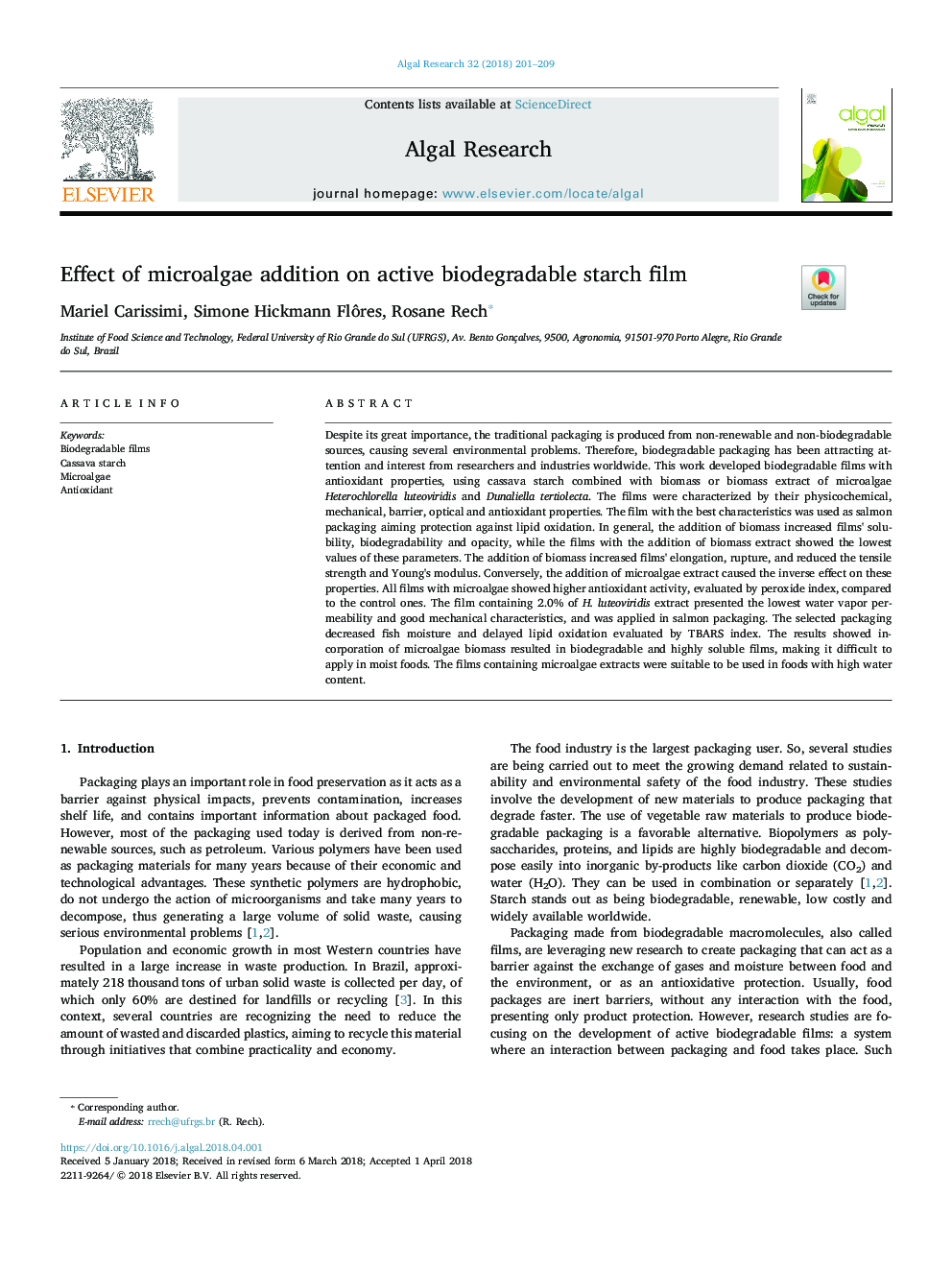| Article ID | Journal | Published Year | Pages | File Type |
|---|---|---|---|---|
| 8085932 | Algal Research | 2018 | 9 Pages |
Abstract
Despite its great importance, the traditional packaging is produced from non-renewable and non-biodegradable sources, causing several environmental problems. Therefore, biodegradable packaging has been attracting attention and interest from researchers and industries worldwide. This work developed biodegradable films with antioxidant properties, using cassava starch combined with biomass or biomass extract of microalgae Heterochlorella luteoviridis and Dunaliella tertiolecta. The films were characterized by their physicochemical, mechanical, barrier, optical and antioxidant properties. The film with the best characteristics was used as salmon packaging aiming protection against lipid oxidation. In general, the addition of biomass increased films' solubility, biodegradability and opacity, while the films with the addition of biomass extract showed the lowest values of these parameters. The addition of biomass increased films' elongation, rupture, and reduced the tensile strength and Young's modulus. Conversely, the addition of microalgae extract caused the inverse effect on these properties. All films with microalgae showed higher antioxidant activity, evaluated by peroxide index, compared to the control ones. The film containing 2.0% of H. luteoviridis extract presented the lowest water vapor permeability and good mechanical characteristics, and was applied in salmon packaging. The selected packaging decreased fish moisture and delayed lipid oxidation evaluated by TBARS index. The results showed incorporation of microalgae biomass resulted in biodegradable and highly soluble films, making it difficult to apply in moist foods. The films containing microalgae extracts were suitable to be used in foods with high water content.
Related Topics
Physical Sciences and Engineering
Energy
Renewable Energy, Sustainability and the Environment
Authors
Mariel Carissimi, Simone Hickmann Flôres, Rosane Rech,
